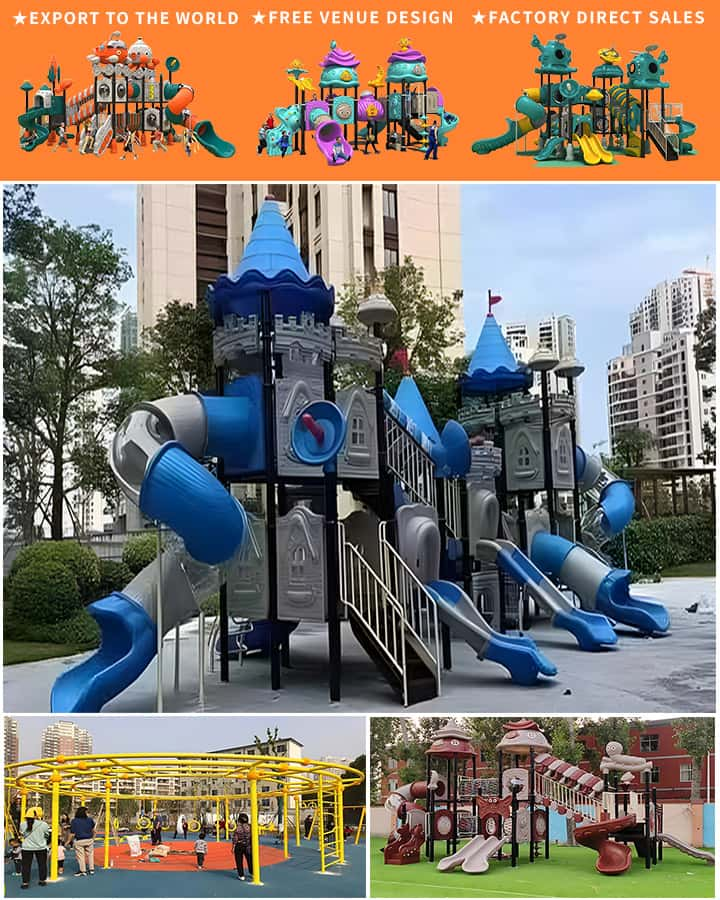Park playgrounds are vibrant hubs of activity and joy for children and adults alike. These recreational areas feature a myriad of equipment designed to promote physical fitness, creativity, and social interaction. If you’ve ever visited a park playground, you’re likely familiar with some of the common pieces of equipment, but do you know their names? In this article, we’ll explore some popular types of playground equipment and delve into the unique names that distinguish them.
1. Swing Sets
Swing sets are perhaps one of the most iconic features of any playground. These structures come in various configurations, from single swings to more elaborate setups with multiple swings hanging from a frame. Common types of swings include:
- Standard Swings: The classic choice featuring seats made from molded plastic or rubberized materials, attached to chains or strong ropes.
- Bucket Swings: Shaped like buckets or molded seats that fully support the child, providing a sense of security while they swing high.
- Tire Swings: Made by mounting large rubber tires onto sturdy ropes, offering a bumpy yet thrilling ride as kids soar through the air.
2. Slides
Slides are a staple of almost every playground, providing endless fun for children of all ages. They come in various designs and sizes, including:
- Traditional Slip ‘n Slide: A flat, straight slide often found at public parks, typically with a smooth surface for easy gliding.
- Curved Slides: Designed for added excitement, these slides curve gently, allowing users to gain speed as they descend.
- Spiral Slides: A compact design where the slide spirals downward, often used in smaller playgrounds due to its space-efficient shape.

3. Merry-Go-Rounds
Merry-go-rounds bring back nostalgic memories for many adults while captivating young children with their twirling motion. These rides can be powered either manually or electronically and usually consist of several animals or other fun shapes mounted on a rotating platform. Some variations include:
- Carousel-Style Merry-Go-Rounds: With beautifully painted horses or other creatures, often found in amusement parks or larger public spaces.
- Simple Spinning Discs: Smaller versions without animals, focusing solely on the rotational experience for toddlers and young kids.
4. Climbing Structures
Climbing structures challenge children’s strength, balance, and coordination. These structures come in numerous forms, each providing unique climbing experiences:
- Jungle Gyms: Comprising of bars, steps, and ladders arranged in various combinations, encouraging kids to navigate their way up and down.
- Rock Walls: Simulating natural rock formations, these vertical surfaces have handholds and footrests for climbers to scale.
- Rope Ladders: Simple yet effective, rope ladders require careful gripping and stepping, promoting concentration and motor skills development.
5. Seesaws
A beloved classic, seesaws offer simple yet exhilarating fun for pairs of children. Also known as teeter-totters, these devices consist of a long board balanced on a central pivot point. As one end goes up, the other goes down, creating a playful push-and-pull dynamic.
6. Monkey Bars
Monkey bars, also known as horizontal ladders, test children’s upper body strength. Comprised of a series of metal bars set horizontally at varying heights, kids can traverse from bar to bar, building muscle and enhancing their hand-eye coordination.
7. Balance Beams
Low to the ground and narrow, balance beams encourage children to develop their balance and confidence as they walk along the length. They may be stationary or slightly wobbly, presenting varying levels of difficulty.
8. Sandbox
While not technically “equipment,” sandboxes are essential components of many playgrounds. Filled with soft sand, they provide a versatile play area where kids can dig, build sandcastles, and engage in imaginative play. Sometimes equipped with lids and benches around the edges, sandboxes foster creativity and sensory exploration.
Conclusion
Park playground equipment plays a crucial role in the development and enjoyment of children and even adults. From swing sets and slides to climbing structures and merry-go-rounds, each piece contributes to a rich tapestry of outdoor fun and physical activity. Knowing the names of these playground features not only enhances your appreciation for their design but also adds to the joy of sharing these experiences with others. So next time you visit a park, take a moment to appreciate the diversity of equipment and maybe even introduce someone to their new favorite piece!




